সরকার এম শাহীন; আন্তর্জাতিকভাবে স্বীকৃত প্রিসিশন মেডিসিন এবং ফার্মাকোজেনেটিক্স গ্রুপের একজন বিশেষজ্ঞ- যিনি শৈশব এবং কিশোর-কিশোরীদের মানসিক ব্যাধি, যেমন অটিজম এবং নিউরোডেভেলপমেন্টাল ডিসঅর্ডারের জেনেটিক্স এবং এই স্বাস্থ্য সমস্যার জেনেটিক এবং পরিবেশগত কারণ, প্রতিকার এবং অভিনব চিকিৎসা পদ্ধতি নিয়ে গবেষণা করছেন।
প্রথমেই আপনার সম্বন্ধে আমরা জানতে চাই
প্রাথমিক শিক্ষা জীবন এবং বেড়ে উঠা ময়মনসিংহ সদর থানার অষ্টধার নামে এক প্রত্যন্ত অঞ্চলে এবং শহুরে জীবন আনন্দমোহন বিশ্ববিদ্যালয় কলেজে উচ্চ মাধ্যমিক পড়াশুনার মধ্য দিয়ে। উচ্চতর পড়াশুনার যাত্রা শুরু হয় চট্টগ্রাম বিশ্ববিদ্যালয়ের ‘সামুদ্রিক বিজ্ঞান ও মৎস্য অনুষদের (https://cu.ac.bd/fmsf/) অধীনে’ব্যাচেলর অফ সায়েন্স এবং এনভায়রনমেন্টাল টক্সিকোলজিতে মাস্টার অফ সায়েন্স এবং স্কুল অফ বিজনেস বাংলাদেশ ওপেন ইউনিভার্সিটি থেকে এমবিএ সম্পন্নের মধ্য দিয়ে। পরবর্তিতে কানাডার ম্যাকগিল বিশ্ববিদ্যালয় (https://www.mcgill.ca/microimm/) থেকে মলিকুলার জেনেটিক্সে গ্রাজুয়েশন এবং যুক্তরাষ্ট্রের হার্ভার্ড বিশ্ববিদ্যালয় (https://hsph.harvard.edu/) থেকে ক্লিনিক্যাল জেনেটিক্সে সংক্ষিপ্ত পোস্ট গ্রাজুয়েশন প্রশিক্ষণ অর্জন । সাম্প্রতি On-The-Job Training প্রশিক্ষণে ইউনিভার্সিটি অব ক্যালগেরি (https://www.ucalgary.ca/) থেকে ‘প্রোজেক্ট ম্যানেজমেন্ট এবং ইনফর্মেশন টেকনোলজি’র’ উপর সার্টিফিকেটশন ডিপ্লোমা লাভ করি।
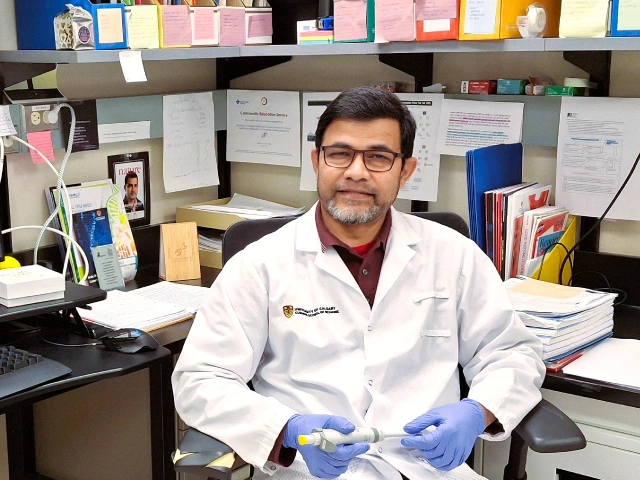
লেখকঃ নিউরোজেনেটিক্স এন্ড প্রিসিশন মেডিসিন ল্যাবরেটরি
নিউরোজেনেটিকস, প্রিসিশন মেডিসিন, টিস্যু বায়োব্যাংকিং এবং ফার্মাসিউটিক্যালস ব্যবস্থাপনায় বিগত ৩২ বছর যাবত কাজ করছি। বর্তমানে কানাডার ইউনিভার্সিটি অব ক্যালগেরি’র (Ucalgary.ca) ‘নিউরোজেনেটিকস অ্যান্ড প্রিসিশন মেডিসিন’ রিসার্চ নেটওয়ার্কের একজন গবেষণা বিজ্ঞানী হিসাবে কর্মরত। ২০১৫ সালে ইউনিভার্সিটি অব ক্যালগেরির (https://hbi.ucalgary.ca/mathison ) ম্যাথিসন সেন্টার ফর মেন্টাল হেলথ রিসার্চ অ্যান্ড এডুকেশন এবং হটচকিস ব্রেন ইনস্টিটিউটের (https://hbi.ucalgary.ca/) আমন্ত্রনে আমার পূর্ববর্তি কর্মস্থল ইউনিভার্সিটি অব টরন্টোর (https://www.utoronto.ca/) শিক্ষাদান হাসপাতাল ‘দি সিক চিলড্রেন হসপিটালে’র (https://www.sickkids.ca/en/research/research-programs/genetics-genome-biology/) জেনেটিক্স এন্ড জিনোমিক্স বায়োলজি থেকে স্থানান্তরিত হই। শিশু এবং কিশোরদের বিশেষায়িত এই প্রতিষ্ঠানটিতে আট বছর রিসার্চ প্রোজেক্ট ব্যবস্থাপক হিসাবে কাজ করার সুযোগ পাই। প্রতিষ্ঠানটি আমাকে শিশু ও কিশোর-কিশোরীদের মানসিক ব্যাধি যেমন -অটিজম,অটিজম স্পেকট্রাম ডিসঅর্ডার, এডিএইচডি,ওসিডি এবং উদ্বেগ স্পেকট্রাম আক্রান্ত মস্তিষ্কের রসায়ন, জেনেটিক্সের ধরন, ফেনোটাইপ বা পর্যবেক্ষণযোগ্য বৈশিষ্ট্য বুঝতে সাহায্য করে।
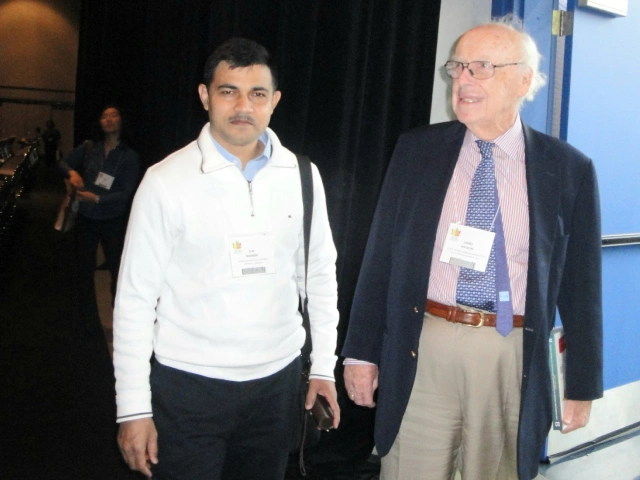
লেখকঃ এবং ডিএনএ’র রহস্যময় কোডের আবিষ্কারক নোবেল জয়ী মলিকুলার বিজ্ঞানী জেমস ওয়াটসন
তাঁরও আগে আমার প্রাথমিক কর্মজীবন শুরু হয় বাংলাদেশে অবস্থিত সুইজারল্যান্ড-ভিত্তিক বহুজাতিক কোম্পানি (https://www.roche.com/) ‘রোশ ফার্মাসিউটিক্যালস’এর লাইফ সেভিং অ্যান্টিবায়োটিক ও ক্যান্সার বিভাগের ক্লিনিকাল ট্রায়াল এবং পর্যায়ক্রমে (https://www.novartis.com/) নোভারটিস লিমিটেড, লিঙ্কারস ফার ইস্ট কোম্পানিতে পণ্যের গুণগত মান নিশ্চিতকরণ এবং ব্যবস্থাপনা বিভাগে দীর্ঘদিন কাজ করার মাধ্যমে। এই ধরণের বাণিজ্যিক শিল্পে কাজ করার সময়, আমি আন্তঃব্যক্তিক দক্ষতা বা Interpersonal Skills সম্পর্কে একটা সম্যক ধারনা লাভ করি; যা অন্যদের সাথে যোগাযোগের গুণাবলী, সেইসাথে ইতিবাচক সম্পর্ক গড়ে তোলার ভিত্তি তৈরি করতে সাহায্য করে। যোগাযোগ এবং আন্তঃব্যক্তিক দক্ষতা (Communication and Interpersonal Skills) উভয়ই একটি শিল্প এবং বিজ্ঞান, যা বস্তুনিষ্ঠ নীতি, সৃজনশীলতা এবং ব্যক্তিগত প্রয়োগের সাথে ভীষণ সাহায্যকারী। এই বিষয়গুলি মানুষের ব্যক্তিগত এবং পেশাদার উভয় জীবনেই সামাজিক পরিস্থিতির সাথে সংযোগ স্থাপন, বুঝতে এবং নেভিগেট করতে সাহায্য করে। এই পৃথিবীর প্রতিটি ক্ষুদ্র থেকে ক্ষুদ্রাতিত অর্জনও যে তার চলমান জীবন ধারার উন্নয়নে গুরুত্ব বহন করে সেটার প্রমান হল আমার বিগত সময়ে এই ইনডাস্টট্রি গুলোতে কাজের সুযোগ। আমি এই ইনডাস্টট্রির সকল প্রশিক্ষক, পরামর্শদাতা এবং নিয়োগকর্তা যারা সফট স্কিলের প্রশিক্ষণের মাধ্যমে আমার প্রারম্ভিক কর্মজীবনকে অন্ধকারমুক্ত করতে সাহায্য করেছেন। আমি সেইসব কৃতীমান মানুষদের প্রতি বিশেষ কৃতজ্ঞতা জানাই । বর্তমানে দীর্ঘ ২৪ বছর যাবত বিদেশে কাজের সুবাদে কত বিখ্যাত গবেষক, শিক্ষক, ছাত্র এবং সর্বোপরি মহান মানুষদেরকে জানার এবং বোঝার সুযোগ হয়েছে। জীবনের শুরুটা অসংখ্য সামাজিক অসঙ্গতি এবং প্রতিকুলতার মধ্য দিয়ে হয়ে উঠার কারনে নিজের Short-Comings বা ত্রুটিগুলি সহজেই ধরতে পাড়ি। জীবনের ধারাবাহিক অধ্যায়ের সংমিশ্রন আমাকে শিখিয়েছে সত্যিকারের মানুষেরা কীভাবে কথা বলে, অন্যকে সাহায্য করে, নিরবে কঠোর পরিশ্রম করে- এমনকি নিজের Credibility কে প্রশ্রয় দেয়ার কোন সুযোগই রাখেনা। মহান আল্লাহ তায়ালাকে ধন্যবাদ এবং কৃতজ্ঞতা জানাই সেইসাথে শ্রদ্ধেয় বাবা,মা, পরিবারের সদস্য এবং আমার সকল শিক্ষাগুরু, প্রিয় বন্ধু, অগ্রজ,অনুঁজদের- যাদের ভালোবাসা এবং অনুপ্রেরণায় আমি ৠনি। একটা সামান্য সংখক মানুষ যারা আমাকে হয়ত কখনও সহ্য করতে পারেনি বা এখনও পারছেন না। আমি নতমুখে তাদঁরকেও কৃতজ্ঞতা জানাই – কারন তাদের এই বিষয়গুলো না থাকলে হয়ত আমার এই ক্ষুদ্র অর্জন ও পথ চলাও সম্ভব হত না।
আপনার গবেষণার বিষয় কি?
আমার এরিয়া অফ এক্সপার্টিজ ‘নিউরোজেনেটিকস অ্যান্ড প্রিসিশন মেডিসিন এবং টিস্যু বায়োব্যাংকিং’ ফর অটিজম অ্যান্ড নিউরো-ডেভেলপমেন্টাল ডিসঅর্ডার। বিষয়টি সহজবোধ্য করার জন্য প্রথমেই নিউরো-জেনেটিকস সমন্ধে একটু ধারনা নেয়া যাক।
নিউরো-জেনেটিক্সঃ ‘নিউরো’ মানে মস্তিস্কের নার্ভ বা নার্ভাস সিস্টেমকে বোঝায় আর জেনেটিক্স হলো বংশগতির অধ্যয়ন। নিউরোজেনেটিক্স জীবের স্নায়ুতন্ত্রের বিকাশ এবং কার্যকারিতায় জিনের ভূমিকা কি সেটা নিয়ে অধ্যয়ন করা। বিশেষ করে স্নায়বিক এবং মানসিক রোগে জিনের ভুমিকা সেইসাথে জেনেটিক পরীক্ষা এবং সরঞ্জাম ব্যবহার করে কীভাবে মস্তিষ্কের স্নায়ুতন্ত্রের বিকাশ, স্নায়ু কোষ সংগঠন, মস্তিষ্কের জটিল রোগসমুহ , ব্যক্তিগত চিকিৎসা পদ্দতি এবং পরিবারের স্বাস্থ্য ঝুঁকি মূল্যায়ন করতে সাহায্য করে। বংশগতির অধ্যয়নের বৈজ্ঞানিক এই পদ্দতির পেছনে যে মুল চালিকা শক্তিটি কাজ করে সেটার নাম জিন যা ডিঅক্সিরাইবোনিউক্লিক অ্যাসিড সংক্ষেপে ডিএনএ নামক এক ধরনের রাসায়নিক উপাদান যা অ্যাডেনিন, গুয়ানিন, সাইটসিন, থায়ামিন-এর সমন্বয়ে গঠিত। জীব কোষের নিউক্লিয়াসে অবস্থিত ডিএনএ একটি নির্দিষ্ট ক্রমে সাজানো থাকে। সাধারণ মানব জিনোমে প্রায় ৩.২ বিলিয়ন বেস জোড়া ডিএনয়ের সন্নিবেশে গঠিত, যা ২৪ ধরণের নিউক্লিয়ার ক্রোমোজোম এবং অনেক ছোট মাইটোকন্ড্রিয়াল (কোষের পাওয়ার হাউস) ক্রোমোজোমের মধ্যে বিভক্ত যা জীবন্ত প্রাণীর জেনেটিক কোড নির্ধারণ করে থাকে । জিন বাবা-মা থেকে সন্তানদের মাঝে প্রবাহিত হয় এবং পরে বংশ পরম্পরায় এ ধারা অক্ষুণ্ণ রাখে; মানব ইতিহাসের শুরু থেকে প্রক্রিয়াটি এভাবেই চলে আসছে। মানুষের নিজস্ব গতি, প্রকৃতি, দৈহিক গঠন, বেড়ে ওঠা, উচ্চতা, চোখের রং, এমনকি রোগ-বালাইসহ যাবতীয় তথ্য বহনকারী উপাদান হিসাবে কাজ করে এই জিন।
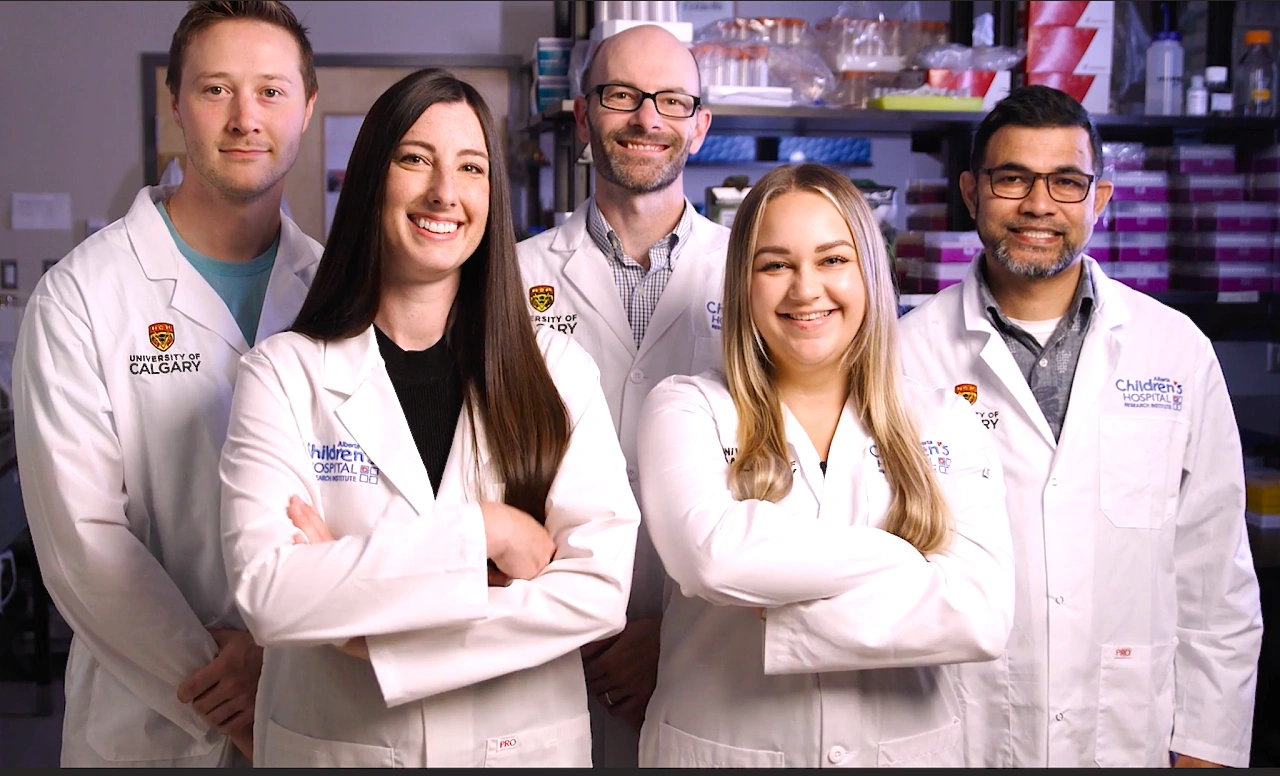
নিউরোজেনেটিকস অ্যান্ড প্রিসিশন মেডিসিন গবেষকগন
‘প্রিসিশন মেডিসিন’ কি?
‘প্রিসিশন মেডিসিন’ চিকিৎসা জগতের এক অভিনব নাম যা কখনও কখনও “ব্যক্তিগতকৃত মেডিসিন” নামে পরিচিত। প্রক্রিয়াটি একজন ব্যক্তির জিন,প্রোটিন,পরিবেশ এবং জীবনধারা সম্পর্কে তথ্য ব্যবহার করে রোগ প্রতিরোধ, পরিবেশ এবং জীবনযাত্রার পার্থক্য বিবেচনা করে প্রিসাইসলি বা একুরেটলি চিকিৎসার একটি উদ্ভাবনী পদক্ষেপ। ‘প্রিসিশন মেডিসিন’ চিকিৎসা কার্যকরী করতে, ওষুধ বিজ্ঞানী এবং স্বাস্থ্যসেবা প্রদানকারীদের চিকিৎসা কতটা ভালোভাবে কাজ করছে তা খুঁজে বের করতে বা রোগ নির্ণয় করতে সাহায্য করে।
https://www.youtube.com/watch?v=6NdXsoo0j3I
‘নিউরোজেনেটিকস অ্যান্ড প্রিসিশন মেডিসিন’ কিভাবে কাজ করে?
‘নিউরোজেনেটিকস অ্যান্ড প্রিসিশন মেডিসিন ল্যাবরেটরি’ শিশু ও যুবকদের মানসিক স্বাস্থ্য সমস্যা ও স্নায়ুবিক বিকাশজনিত রোগ, যেমন-অটিজম,অটিজম স্পেকট্রাম ডিসঅর্ডার, এডিএইচডি, ওসিডি এবং উদ্বেগ স্পেকট্রাম আক্রান্ত শিশুদের ডিএনএ ভ্যারিয়েশন বা মিউটেশন সনাক্তরনের মাধ্যমে রোগের ধরন নির্ণয় করে থাকে। এ প্রক্রিয়ায় আমরা জিন সীকুয়েন্স নামক পরীক্ষামূলক পদ্ধতি অনুসরণ করে থাকি। জিন সিকোয়েন্স অথবা ডিএনএ সিকোয়েন্সিং পদ্ধতিটি উপরের বর্ণিত চারটি ডিএনএ’র রাসায়নিক উপাদান অ্যাডেনিন, গুয়ানিন, সাইটসিন, থায়ামিন (A, T, C, G) সুনির্দিষ্ট ক্রম নির্ধারণের জন্য ফ্লুরোসেন্ট লেবেলযুক্ত টার্মিনেটর বেস এবং এনজাইম ব্যবহার করে। ডিএনএ সিকোয়েন্সিং পদ্ধতিগুলির মধ্যে রয়েছে স্যাঙ্গার সিকোয়েন্সিং, যা পৃথক ডিএনএ অংশগুলির জন্য ব্যবহৃত হয় এবং পরবর্তী প্রজন্মের সিকোয়েন্সিং (Next Generation Sequencing), যা সমগ্র জিনোমের অধ্যয়নকে ত্বরান্বিত করার জন্য

HBI: মস্তিষ্ক এবং মানসিক স্বাস্থ্যের ক্ষেত্রে নতুন আবিষ্কার এবং চিকিৎসা উন্মোচনে আন্তর্জাতিকভাবে স্বীকৃত গবেষণা কেন্দ্র
একযোগে লক্ষ লক্ষ ডিএনএ অংশগুলির দ্রুত সিকোয়েন্স করে। এই প্রক্রিয়াটিতে সাধারণত ডিএনএ পরিবর্ধন,খণ্ড তৈরি, এনজাইমেটিক প্রতিক্রিয়া এবং ফলস্বরূপ জেনেটিক কোড, ডিকোড করার জন্য ফ্লুরোসেন্ট সংকেত বিশ্লেষণ করে থাকে। অবগতির জন্য জানাচছি,বর্তমানে সারা পৃথিবী জুড়েই অটিজম বা নিউরো-ডেভেলপমেন্টাল চিকিৎসায় অ্যাবসোলুট কোণ ডায়াগনসটীক পদ্ধতি নাই। প্রচলিত প্রথাগত চিকিৎসা পদ্ধতি ‘যা সবার জন্য একই নিয়ম’ বা One Fits for All পদ্ধতিটি এই চিকিৎসায় প্রচলিত, যা সাধারণত ওষুধের নির্দেশিকা ও অন্যান্য রোগীর চিকিৎসাতত্ত্বের ভিত্তিতে পরিচালিত। রোগ নিরাময়ের ক্ষেত্রে একজন মানুষের নিজস্ব জেনেটিকস, বিপাক এবং অন্যান্য পার্থক্যের কারণে, এই ট্রায়াল অ্যান্ড এরর অ্যাপ্রোচ সবার জন্য কার্যকর নাও হতে পারে। রোগীর জিনগত তফাত এবং বৈশিষ্ট্যের তারতম্যের জন্য, এই পদ্ধতিতে কিছু ওষুধ একজনের বিপাকীয় প্রক্রিয়াকে কঠিন করে তুলতে পারে এবং তার জন্য স্বাভাবিক ডোজ কার্যকর না হও হতে পারে ফলে রোগীর পার্শ্বপ্রতিক্রিয়া সেইসাথে মৃত্যু ঝুকির সম্ভাবনাও থাকে । ডায়াগনসটীক পদ্ধতির এই দুর্বলতা মাথায় রেখে আমাদের নিউরোজেনেটিকস রিসার্চ গ্রুপটি ইতিমধ্যেই ‘শিশু এবং তরুণদের’ মানসিক স্বাস্থ্যের ওপর নির্ভর করে ফার্মাকোজেনেটিক টেস্টিং পদ্ধতি উদ্ভাবনে সক্ষম হয়েছে যেটা কানাডার প্রথম প্রমাণভিত্তিক টেস্টিং পদ্ধতি https://youtu.be/BjUlLkSbhxk হিসাবে আন্তর্জাতিকভাবে স্বীকৃতিপ্রাপ্ত। এ পদ্ধতির মূল লক্ষ্য, রোগীর নিজস্ব জেনেটিক মেকআপ, মলিকুলার প্রোফাইল এবং তার ব্যক্তিগত তথ্য বিবেচনা করে, রোগনির্ণয় এবং সে অনুসারে প্রিসাইস চিকিৎসা প্রক্রিয়াকে নিশ্চিত করা। একজন অটিসটীক (Autistic) রোগী প্রথাগত ওষুধ যেমন- অ্যান্টিডিপ্রেসেন্টস, অ্যান্টিসাইকোটিকসের বর্তমান ট্রায়াল-অ্যান্ড-এরর প্রক্রিয়ার মধ্যে সীমাবদ্ধ থাকার ফলে ওষুধ গ্রহণকারীদের সুস্থতার এবং তাদের পরিবারের অর্থনৈতিক খরচের ওপর এক ধরনের নেতিবাচক প্রভাব ফেলে। এ ট্রায়াল-অ্যান্ড-এরর প্রক্রিয়াটি আংশিকভাবে ফার্মাকোজেনেটিক পরীক্ষা প্রয়োগের মাধ্যমে এড়াতে সক্ষম, পাশাপাশি ওষুধের কার্যকারিতা উন্নত করার এবং অনুপযুক্ত ওষুধের প্রতিক্রিয়ার সঙ্গে সম্পর্কিত অসুস্থতা, মৃত্যুহার এবং অপ্রয়োজনীয় খরচ কমানোর ঝুঁকি এড়াতেও সক্ষম। যে কারনে পদ্ধতিটিকে প্রিসিশন মেডিসিন বা পারসনালাইজড মেডিসিন বলা হয়।
টিস্যু বায়োব্যাংকিংঃ
নিউরোজেনেটিকস টিস্যু ব্যাংক হল জৈবিক নমুনা (যেমন রক্ত, টিস্যু এবং ডিএনএ-এর মতো মানব জৈবিক নমুনাগুলি, সেইসাথে সংশ্লিষ্ট স্বাস্থ্য তথ্য সংগ্রহ, প্রক্রিয়াকরণ, সংরক্ষণ এবং বিতরণের মাধ্যমে কাজ করে। এই জৈবিক নমুনাগুলি অত্যন্ত কম তাপমাত্রায় ফ্রিজারে সংরক্ষণ করা হয়। বায়োব্যাংকগুলি যে কোন গবেষকদের জন্য গুরুত্বপূর্ণ সম্পদ, যা রোগের কারণ এবং প্রভাবগুলি তদন্ত করতে, নতুন ডায়াগনস্টিক পরীক্ষা এবং থেরাপি তৈরি করতে এবং ক্লিনিকাল ফলাফল এবং জীবনধারার তথ্যের সাথে জিনোমিক তথ্য সংযুক্ত করে ব্যক্তিগতকৃত ওষুধকে এগিয়ে নিতে সক্ষম করে। নিউরোজেনেটিক্স প্রিসিশন ল্যাবরেটরি এ পর্যন্ত এক লক্ষ দশ হাজারের মত Human DNA সংগ্রহ, সংরক্ষণ Quality Assurance সহ ক্লিনিকাল এবং অন্যান্য মানসিক গবেষণার নির্দেশিকা ও নীতিমালার বজায় রেখে যেমন বারকোডিং, স্ক্যানিং, পরিচালনা এবং প্রক্রিয়াকরণের জন্য সর্বোত্তম অনুশীলন নিশ্চিত করে । বায়োব্যাংক অন্যতম কাজের মধ্যে জৈব নমুনা (Human DNA) এবং জৈব ব্যাংকিং মান প্রতিষ্ঠার (Quality Assurance ) নিশ্চিতের পাশাপাশি নমুনাগুলিতে অন্যান্য সহযোগী বিজ্ঞানীদের অ্যাক্সেস সহজতর করা এবং সেইসাথে স্থানীয় এবং আন্তর্জাতিক সহযোগিতা নিশ্চিত করা আবশ্যক। টিস্যু বা ডিএনএ-এর নমুনা পরিচালনা করার জন্য সফ্টওয়্যার বায়োব্যাংকিং জড়িত (https://www.bcplatforms.com/, https://www.freezerworks.com/ ) যা বায়োব্যাংকিং ইনফরমেশন ম্যানেজমেন্ট সিস্টেম (BIMS) বা ল্যাবরেটরি ইনফরমেশন ম্যানেজমেন্ট সিস্টেম (LIMS) নামে পরিচিত। সফ্টওয়্যার বায়োব্যাংকিং সিস্টেমগুলি স্বয়ংক্রিয় ট্র্যাকিং, হেফাজতের শৃঙ্খল রক্ষণাবেক্ষণ, ব্যবস্থাপনা এবং নিয়ন্ত্রক মানগুলির সাথে সম্মতির মতো বৈশিষ্ট্য সরবরাহ করে, যা পুনরুৎপাদনযোগ্য গবেষণা, ব্যক্তিগতকৃত ওষুধ এবং ওষুধ আবিষ্কার এবং ক্লিনিকাল ট্রায়ালে সহযোগিতামূলক প্রচেষ্টার সুবিধার্থে অত্যন্ত গুরুত্বপূর্ণ।

নিউরোজেনেটিক্স টিস্যু বায়োব্যাংক
আপনার গবেষণার কাজগুলি কিভাবে আমাদের উপকৃত করছে কিংবা করবে?
একবিংশ শতাব্দীতে ‘ফার্মাকোজেনেটিক্স ও প্রিসিশন মেডিসিন’ রোগের সঠিক ডায়াগনসিস এবং ওষুধ নির্বাচনের ক্ষেত্রে উদিয়মান একটি উদ্ভাবন যা চিকিৎসাসেবায় গুরুত্বপূর্ণ ভূমিকা রাখতে সক্ষম। ফার্মাকোজেনেটিক্স ও প্রিসিশন মেডিসিন পদ্ধতির সঠিক ব্যবহারের মাধমে চিকিৎসা জগতের বিভিন্ন ক্ষেত্র যেমন-নিউরো-ডেভেলপমেন্টাল ডিসঅর্ডার,ক্যানসার, আর্থ্রাইটিস,ডায়াবিটিস,হৃদরোগ সহ অন্যান্য জটিল রোগগুলোর চিকিৎসায় যথাযথ ব্যবহারের সমূহ সম্ভাবনা রাখে। বাংলাদেশের মত জন বহুল দেশে এ পদ্ধতি বাস্তবায়নে দেশের জনস্বাস্থ্য, চিকিৎসা, স্বাস্থ্যশিক্ষা ও চিকিৎসাসেবীর অর্থনৈতিক খরচের বোঝা কমানোসহ ইতিবাচক প্রভাব ও ভূমিকা রাখতে পারে।
গবেষণা কাজের বিশেষ কোন অভিজ্ঞতা কি আমাদের সাথে শেয়ার করবেন?
শিক্ষা জিবনের শুরুতেই জীবের গঠন এবং জীববিজ্ঞান সম্পর্কে কৌতূহল যেমন জীবের কোষের গাঠনিক প্রক্রিয়া, কোষের ভিতরের পাওয়ার মাইটোকন্ড্রিয়া কীভাবে সংগঠিত হয় এবং কীভাবে তাদের বৃদ্ধি, পুনরুৎপাদন এবং বেঁচে থাকতে সক্ষম করে-বিষয়গুলোর জানার আগ্রহের প্রাথমিক বহিঃপ্রকাশ ঘটে নবম শ্রেণীতে জীববিজ্ঞানের ব্যবহারিক ক্লাসে। ব্যাঙের ব্যবচ্ছেদের ক্লাসে ছক বাধা কিছু প্রশ্ন থাকতো- এর বাইরের আমার অনেক প্রশ্নে জীববিজ্ঞানের স্রদ্ধেয় শিক্ষক অনেক বিরক্ত হতেন। উদ্ভিদ বিদ্যা ক্লাসের অরেক কৌতূহলি ব্যবচ্ছেদে মডেলের নাম ‘হিবিস্কাস রোজা সিনেনসিস বা জবা ফুল’। সংক্ষিপ্ত স্কুলের শিক্ষা জিবনে পরিক্ষার নম্বর প্রাপ্তির ছক বাধা নিয়ম আমাকে অনেক কৌতূহলী প্রশ্নের উত্তর দেয়নি । কলেজ ছাত্র থাকাকালীন সময়ে জীববিজ্ঞানের শিক্ষক একাধারে পাঠ বইয়ের প্রনেতা প্রয়াত ডক্টর মুহাম্মদ জাহাঙ্গির হাসান; আমার পছন্দের শিক্ষাগুরুদের একজন যিনি বিশাল ক্লাসের কোলাহল বন্ধ করার কৌশল হিসাবে প্রাণীদের কঙ্কাল নির্লিপ্ত ভাবে ব্ল্যাকবোর্ডে একে ক্লাসরুম নিশ্চুপ করে ফেলার ক্ষমতা রাখতেন। তার কাছে শিখেছিলাম ব্যাঙের পূর্ণ ব্যবচ্ছেদের সাথে অন্যান্য জিবের সম্পর্ক। কিন্তু এইচএসসি সময়টাও খুবই সম্মান্য। পরবর্তীতে এনভায়রনমেন্টাল টক্সিকোলজিতে মাস্টার্সের থিসিসে আমার টপিক ছিল গভীর বঙ্গোপসাগরের মাছ, মাটি এবং পানির টক্সিসিটি ‘ডিডিটি’ (একটি মাঝারি বিষাক্ত এবং স্থায়ী রাসায়নিক উপাদান ) নির্ণয় করা যা মানুষের ক্যান্সারের জন্য দায়ি হতে পারে। কাজটির জন্য আমাকে ঢাকার অদূরে সাভারে অবস্থিত ‘পারমাণবিক শক্তি গবেষণা প্রতিষ্ঠানের’ দারস্থ হতে হয় কারন সেইসময় একমাত্র পরীক্ষাগার যাদের পরিবেশগত নমুনার বিষাক্ত স্তর সনাক্তকরণ যন্ত্র ‘গ্যাস ক্রোমাটোগ্রাফি কলাম’ ছিল। চট্টগ্রামের বঙ্গোপসাগর থেকে সামুদ্রিক মাছ, পানি এবং মাটি সংগ্রহ করে পারমাণবিক শক্তি গবেষণাগারে নিয়মিত আসা যাওয়া ব্যাপারটা মোটেও সহজ ছিলনা।
বিশেষ করে সেই সময়ে এই ধরণের গবেষণায় কাজে বিশ্ববিদ্যালয়ের মেধাবী বৃত্তি বা ন্যূনতম ফাইনানশিয়াল সাপোর্ট বলে কিছু ছিলোনা। উদীয়মান তরুণ গবেষকরা কেন নিজ দেশের গবেষণায় মনযোগী হয়না আমি সে সময়েই বিষয়টা ঊপলব্ধি করেছিলাম। যদিও নমুনা সংগ্রহের ব্যাপারে র্যাংগস সি-রিসোর্স লিমিটেড গ্রুপের কর্ণধার আমানুল্লাহ চৌধুরি তাদের বাণিজ্যিক মৎস্য আহরন কারি জাহাজের মাধ্যমে সম্পূর্ণ সহযোগিতা করেছিলেন- কিন্তু বিষয়টি ছিল একান্তই বাক্তিগত যোগাযোগের মাধ্যম । শ্রদ্ধেয় আমানুল্লাহ চৌধুরি এখন প্রয়াত। উনাকে ধন্যবাদ আমাকে উৎসাহিত করার জন্য। আরও দুঃখজনক বিষয় ছিলো গবেষণায় নির্ধারিত এক বছরের কাজ সমাপ্ত করতে আমার পুরপুরি দুই বছর সময় লেগেছিল। এর পেছনের কারন হল হঠাত গ্যাস ক্রোমাটোগ্রাফি অকেজো হয়ে যাওয়ার পর মেরামতের জন্য মেশিনটিকে আন্তর্জাতিক পরমাণু শক্তি কমিশন ভিয়েনা’তে পাঠানো হয়েছিলো -কারন এটা ছিল তাদেরই সম্পত্তি। সেই সময়ে মনে হয়েছিল আমি আমার গবেষণা হয়ত নির্ধারিত সময়ে শেষ হবেনা ফলশ্রুতিতে চলতি বছরে আমার গ্রাজুয়েশন সম্পপন্ন হবে না। অপর্যাপ্ত প্রযুক্তিগত সহায়তা, অনিয়ন্ত্রিত আমলাতন্ত্র এবং কম দক্ষতা সম্পন্ন তত্ত্বাবধান পদ্ধতির জন্য আমার গবেষণা কাজের পরিতৃপ্তির চাইতে বহুমাত্রিক অভিজ্ঞতাই বেশি হয়েছে। কিন্তু আমি উৎসাহ হারাইনি। আল্লাহর অশেষ কৃপায় আমি অত্যন্ত সাহস এবং সন্মানের সাথে গবেষণার কাজটা ডিপার্টমেনটে উপস্থাপনা করতে পেরেছিলাম এবং পরে কাজটা একটি সুনামধন্য জার্নালে প্রকাশিত হয়েছিল। এই অভিজ্ঞতা থেকেই আমি সিদ্ধান্ত নিয়েছিলাম এবং স্বপ্ন দেখেছিলাম যে একটি অত্যাধুনিক ল্যাবে কাজ করব যেখানে এই প্রতিকুলতাগুলো থাকবেনা। গ্রাজুয়েশন শেষে যদিও পছন্দের গবেষণা ধর্মী কাজের সুযোগ মেলেনি। কিন্তু বিশ্বখ্যাত বহুজাতিক কোম্পানিগুলোতে অনায়াসেই চাকরী পেতে অসুবিধা হয়নি- আলহামদুলিল্লাহ্। যেখানে আমি জীবনধর্মী অনেক মূল্যবান অভিজ্ঞতা অর্জন করার সুযোগ পাই। তার কিছুদিন পর উত্তর আমারিকার দেশ কানাডার অভিবাসী হিসাবে নতুণ যাত্রা শুরু করি। পছন্দের তালিকায় থাকা ম্যাকগিল বিশ্ববিদ্যালয়ের মলিকুলার জেনেটিক্সে পূর্ণ আর্থিক সহায়তার মাধমে আবারও নতুন বিষয়ে গ্রাজুয়েট প্রোগ্রাম শুরু করি ।
ম্যাকগিল বিশ্ববিদ্যালয়ে আমার সুপারভাইজার ছিলেন একজন দুর্দান্ত পরিশ্রমী,অত্যন্ত নিরহংকার, সফল মলিকুলার বিজ্ঞানি। বাংলাদেশ থেকে সদ্য আগত ভিন্ন বিষয়ে পড়াশুনার করে উনার ল্যাবে Molecular Genetics এ পড়াশুনার শুরুটা ছিল আমার জন্য ‘জলের মাছ ডাংগায় বসবাসের মত’- এ যেন সারভাইভ্যাল ফিটটেস্টের এক দুর্দান্ত পরিক্ষা। । বিষয়টা আমার সুপারভাইজার ভাল করেই জানতেন এবং তিনি আমাকে সে সময়টাতে সেভাবেই সাপোর্ট দিয়েছিলেন । শুধু তাই নয় একদিন আমার এপার্টমেন্টের দরজা ভেংগে সবকিছুই চুরি হয়ে যায়- সে সময়ে তিনি আমাকে প্রয়োজনীয় সাহায্য সহ অনেক সাহসি গল্পও শুনিয়েছিলেন। তার এই মহান আচরনে আমি তখন নতুন করে উদ্যমি হতে শিখি এবং শত প্রতিকুলতার মধ্যেও আমার বেঁচে থাকার লড়াইয়ের আত্মবিশ্বাস বেড়ে যায় শতগুন। কিছুটা গবেষণার ধরন এবং নিজেকে খাপ খাইয়ে নেয়ার কারনেই দেখা যেত প্রায়শই experiment শেষে বাসায় ফিরতে আমার মধ্যরাত হয়ে যেত। অবশ্য এছাড়া আমার অন্যকোন উপায়ও ছিল না। আমি তার ল্যাব থেকে অত্যন্ত কনফিডেন্স নিয়ে গ্র্যাজুয়েশন সম্পন্ন করি এবং আমার কাজ দুটো টপ রাঙ্কিং জার্নালে প্রকাশিত হয়। আমার সুপারভাইজার’কে প্রায়শই গর্ব করে অনেকের সামনেই আমার সমন্ধে বলতে দেখেছি ‘My Great Graduate Student’. আলহামদুলিললাহ।
আত্ম-উপলব্ধি এবং সারাংশ
১. আমরা প্রায়শই অন্যদের ভালো করার মাধ্যমে প্রতিদান খুজিঁ। কিন্তু যদি কেউ কোন প্রতিদানের আশা না করে সত্যিকারের উপকার করে, তাহলে আল্লাহ তাকে বহুগুণ পুরস্কৃত করবেন, এমনকি যদি তা তাদের কল্পনা এবং সীমানার বাইরের কারো মাধ্যমেও হয় – এটি ম্যাকগিল বিশ্ববিদ্যালয়ের আমার সুপারভাইজারের ক্ষেত্রে প্রযোজ্য।
২. জন্মগত প্রতিভা বা দক্ষতা একটি ভ্রান্ত ধারণা। এই শব্দগুলি একজন ব্যক্তির অভ্যন্তরীণ ব্যবস্থাকে দুর্বল থেকে দুর্বলতর করে তোলে ফলস্বরূপ, সে ভালো কিছু করার উৎসাহ হারিয়ে ফেলে। একজন মানুষের Productivity উম্মচনের জন্য জরুরি ষয়গুলির মধ্যে প্রকৃত সাপোর্ট, কাজের পরিবেশ, রিসোর্স, ভালো কাজের স্বীকৃতি এবং উৎসাহ প্রদান অনেক পজিটিভ ভুমিকা রাখে। এই বিষয়গুলি মানুষের মস্তিষ্কের কর্মক্ষমতা বৃদ্ধি করতে সাহায্য করে – এবং তখনই তার কৌতূহল উৎপাদনশীলতার মুখ দেখে।
৩. বেঁচে থাকার সংগ্রাম হয়ত সবাই করে কিন্ত সংগ্রামি হওয়ার জন্য সঠিক গুরুর যেমন বিকল্প নেই তেমনই “সাফল্যের জন্য শর্টকাট কোন পথও খোলা নেই” । আমার কাছে প্রকৃত সংগ্রাম এবং সাফল্যের জন্য ধারাবাহিক প্রচেষ্টা খুবি কার্যকরী; জাপানিজরা যাকে Continuous Development বা কাইজেন বলে।
একজন বিজ্ঞানীর কি কি গুণ থাকা প্রয়োজন বলে মনে করেন?
১। ‘কৌতূহল‘- বিজ্ঞান হল কৌতূহলের মৌলিক সাফল্য। কৌতূহল নিষ্ক্রিয় শিক্ষার্থীদের সক্রিয় অনুসন্ধানকারীতে পরিণত করে। একজন গবেষকের প্রতি মুহূর্তেই “কেন” এবং “কিভাবের” উত্তর খোঁজা কৌতূহলেরই ফলাফল। কৌতূহল বিষয়ে আলবার্ট আইনস্টাইনের একটি উক্তি ‘আমার কোন বিশেষ প্রতিভা নেই আমি কেবল আবেগের সাথে কৌতূহলী’- বিষয়টি আমাকে ভীষণ অনুপ্রানিত করে।
২। ব্যর্থতা – “ব্যর্থতা মানে শেষ নয়-এটা পড়ে যাওয়ার পর উঠে দাঁড়ানোর সক্ষমতা। পড়ে যাওয়ার পর উঠতে না চাওয়ার নামই হচ্ছে ব্যর্থতা- আব্রাহাম লিঙ্কন। সফল বিজ্ঞানীদের অন্যতম গুণই হচ্ছে বার বার পড়ে যাওয়ার পর উঠে দাঁড়ানোর ধারাবাহিক চেষ্টা। আমার এই ক্ষুদ্র জিবনে ব্যর্থতা আমাকে অনেক কিছু শিখিয়েছে। ব্যর্থতা আমার শিক্ষক- এই শিরোনামে আমি একটি পুস্তক লিখার অপাক্ষায় আছি। যা পরবর্তীতে শেয়ার করব ইনশাল্লাহ। ব্যর্থতার উপর প্রিয় আর্টিকেল ‘The Value of Failure in Science: The Story of Grandmother Cells in Neuroscience’
পড়ার অনুরোধ থাকল: frontiersin.org
৩। লেগে থাকা-একজন বিজ্ঞানীর অপরিহার্য অভ্যাস যা তার কাজের ধারাবাহিক উন্নতির পেছনে কাজ করে। জাপানিজ’রা উন্নত আমরা অনেকেই জানি এর পেছনে তারা তাদের নিজস্ব থিওরি ব্যবহার করে থাকে যা Kaizen থিওরি নামে পরিচিত। এই থিওরির মূল ধারণা হল , ক্ষুদ্র, ক্ষুদ্র কাজের উন্নয়নের মাধ্যমে ধারাবাহিক উন্নতি যা চূড়ান্ত সাফল্যের দিকে নিজেকে পরিচালিত করা । Kaizen: The Japanese Method for Transforming Habits, One Small Steps at a Time. (Kaizen এর উপর বাংলায় অনুবাদ বই বাংলাদেশে (রকমারি.কম বা Amazon থেকে সংগ্রহ করতে পারেন)।
বাংলাদেশের তরুণ শিক্ষার্থী যারা বিজ্ঞানে কাজ করতে চায় – তাদের জন্য আপনার কোন ম্যাসেজ কিংবা বার্তা কি?
১। ২০০৫ সালে Apple Computer এর উদ্ভাবক স্টিভ জবস স্ট্যানফোর্ড বিশ্ববিদ্যালয়ে ছাত্রদের সমাবর্তনি ভাষণে বলেছিলেন “Stay Hungry, Stay Foolish” (www.youtube.com) “ক্ষুধার্ত থাকো, বোকা থাকো”। একজন বিজ্ঞান শিক্ষার্থীকে নতুন ধারণা সমন্ধে গভীর কৌতূহল, নতুন জ্ঞান এবং অভিজ্ঞতার প্রতি ক্ষুধা থাকা চাই । ক্ষুধার্ত মনোভাবটি একজন বিজ্ঞান শিক্ষার্থীর ক্রমাগত শেখা এবং অগ্রগতিকে উৎসাহিত করে। ঠিক তেমনি বোকা বলতে গতানুগতিক নিয়ম বা কমফোর্ট জোন থেকে বেরিয়ে অনুসন্ধানি হতে শেখায়। একজন শিক্ষার্থীকে ধরে নিতে হবে যে; তার অনেক কিছুই জানা নেই যদিও কিছু জানআ থাকে তবে সেটার আত্মতুষ্টি যেন তাকে থামিয়ে না দেয়। বিষয়টি কারো কারো কাছে যদিও বোকামি স্বভাবের মত মনে হতে পারে।
২। জীবনের লক্ষ্য স্থির করা এবং লক্ষ্যের সাথে দৈনন্দিন কাজের priority সেট করা । একইসাথে জীবন লক্ষ্যের কাজকে আপনি Enjoy করছেন বা ভালবাসছেন কিনা খুজে বের করা -বিষয়টি অত্যন্ত জরুরি । কারন ভালবাসাহীন কোণ কিছুই গন্তব্বের মুখ দেখেনা। কাজের ভালবাসা তৈরির জন্য ক্ষুদ্র ক্ষুদ্র বিজ্ঞান বিষয় যেমন; মস্তিষ্কের নিউরন, ডিএনএ, আরঅ্যানএ, প্রোটিন, জিন, জিনোমিক্স, এগুলো কি (?) এবং কিভাবে কাজ করে? এমনকি সৃষ্টি জগতের মৌলিক বিষয়বস্তুর উপর জানার আগ্রহ থাকা। জানার আগ্রহের ব্যাপারে তাড়াহুড়ো করা যাবে না- এটা বুদ্ধিমানের কাজ নয়। লং টার্মে সফল হওয়ার জন্য কার্যকরী “Slow and Steady” বা ধীর এবং স্থির পদ্ধতি বেশ কার্যকরী ।
৩। ভুল থেকে শেখার অভ্যাসঃ ব্যর্থতা বৈজ্ঞানিক প্রক্রিয়ার একটি স্বাভাবিক এবং অপরিহার্য অংশ। বৈজ্ঞানিক আবিষ্কার প্রায়শই অসংখ্য পরীক্ষা, ত্রুটি এবং ব্যর্থতার সাথে জড়িত থাকে। এর মানে এই নয় আপনি বার্থ হতে চলেছেন। এই ব্যর্থতা আপনার চূড়ান্ত সাফল্য অর্জনের আগে মূল্যবান তথ্য এবং শেখার সুযোগ করে দেয়। তারপর পরিস্থিতি নিয়ে চিন্তা করুন এবং ভুলের কারন Trouble Shoot করুন। কেন এবং কীভাবের উত্তর খুঁজে বের করুন । অবশেষে, পরবর্তী কাজের দৃষ্টিভঙ্গি পরিবর্তন করার জন্য পদক্ষেপ নিন এবং ভুলের পুনরাবৃত্তি রোধ করুন। ভুল থেকে শেখার অভ্যাস মস্তিষ্ককে নতুন কৌশল সম্বন্ধে ধারনা দেয় যা ভবিষ্যত সাফল্যের জন্য ভীষণ কার্যকরী। বিখ্যাত জাপানিজ হোন্ডা মোটর কোম্পানির প্রতিষ্ঠাতা মিঃ হোন্ডা “Success is 99 percent Failure” উক্তিটি ধারন করেই সাফল্যের চূড়ান্ত লক্ষে পৌঁছাতে সক্ষম হয়েছিলেন কিন্তু ব্যর্থতা এড়িয়ে যাওয়ার মাধ্যমে নয়। অনলাইনে এই বিষয়ে ফ্রি পিডিফ পেতে পারেন (The Value of Mistakes: A Pathway to Experience and Wisdom)।
৪। লিগাসি’র (Legacy) মাঝে বেঁচে থাকার অভ্যাস গড়ে তোলা।
” মানুষের জীবন খুবই ভঙ্গুর এবং ক্ষণস্থায়ী” সহজাতভাবেই দুর্বল এবং সংক্ষিপ্ত এই জীবন অনিবার্যভাবে শেষ হওয়ার জন্য নির্ধারিত। Legacy হল এই সংক্ষিপ্ত জীবনে আপনি যা অর্জন করে চলছেন বা করবেন হতে পারে আপনার বৈজ্ঞানিক নোবেল পুরষ্কার, বিশাল সামাজিক ও অর্থনৈতিক ভিত্তি, পারিবারিক ঐতিহ্য এবং আরও অনেক মূল্যবান কিছু যা মানুষের কল্যাণের স্রোতে রেখে যাওয়া। এটি সেই প্রভাব যা আপনার চলে যাওয়ার পরেও প্রজন্ম থেকে প্রজন্মে নদীর ধারার মত প্রবাহমান থাকবে। তাই আপনিও সিদ্ধান্ত নিতে পারেন আপনার Legacy কি হবে?
লিগাসি’র (Legacy) কিছু দৃষ্টান্তঃ
১৯২৮ সালে আলেকজান্ডার ফ্লেমিং পেনিসিলিন আবিষ্কার করেন, যা ব্যাকটেরিয়ার বৃদ্ধিকে বাধা দেয়।
পেনিসিলিন আবিষ্কার নিঃসন্দেহে চিকিৎসা জগতের এক নতুন সুচনা। পরবর্তীতে অন্যান্য বিজ্ঞানী, বিশেষ করে হাওয়ার্ড ফ্লোরি এবং আর্নস্ট চেইন, যারা পেনিসিলিন পরিশোধন এবং ব্যাপকভাবে উৎপাদন করে, এই কাজটিকে এগিয়ে নিয়ে যান; যার মাধ্যমে প্রথম আধুনিক অ্যান্টিবায়োটিক যুগের ভিত্তি স্থাপিত হয়। ফ্লেমিং’এর এই অভিনব আবিষ্কার নোবেল পুরষ্কারের স্বীকৃতি পেয়েছিলো। পেনিসিলিনের এই আবিষ্কার মরনব্যাধি সংক্রমণকে নিরাময়যোগ্য করে লক্ষ লক্ষ জীবন বাঁচানোর প্রত্যয়ে আজ অবধি চিকিৎসা জগত আলেকজান্ডার ফ্লেমিংয়ে’র Legacy বহন করে চলছে।
১৯৬২ সালে, ওয়াটসন, ক্রিক এবং ওয়িল্কিন্স নামে বিজ্ঞানীদের সমন্বয়ে জীবনের রহস্যময় কোড
ডিএনএ (DNA-a new twist on life) আবিষ্কারের জন্য তাদেরকে নোবেল পুরষ্কার দেওয়া হয়। যা আধুনিক জীববিজ্ঞানের একটি যুগান্তকারী সফলতা হিসেবে আজও প্রতিষ্ঠিত । ডিএনএ (DNA) ডি-অক্সি-রাইবো-নিউক্লিক অ্যাসিড একটি জটিল অণু যা সমস্ত পরিচিত জীব এবং অনেক ভাইরাসের জন্য জেনেটিক ব্লুপ্রিন্ট হিসাবে কাজ করে। ডিএনএ’র এই আবিষ্কার Precision Medicine, Development of new Drugs and Vaccines through recombinant DNA Technology’র মাধ্যমে অভিনব ওষুধ তৈরির কাজে ভীষণ উপযোগী একটি মাধম। এই আবিষ্কার জেনেটিক প্রবণতা সনাক্ত করে রোগ নির্ণয় এবং প্রতিরোধ উন্নত করে চিকিৎসা জগতে লিগাসি’র (Signature Legacy) স্বাক্ষরতা বহন করে চলছে ।
পরিশেষে:
আমার জীবনীতে এমন কোন নির্দিষ্ট বিশেষত্ব বা আবিষ্কার নেই যাতে অন্যরা বিশেষভাবে আকর্ষণীয় উদাহরণ হিসাবে অনুসরণ করতে পারে। কিন্ত আমার একটি প্রাণবন্ত জীবনযাত্রা রয়েছে যেটা অনেক ব্যর্থতা, সময়ের উত্থান-পতন, লেগে থাকা, স্বপ্ন এবং আত্মবিশ্বাসের বৈচিত্র্যপুরর্ন সমন্বয়ে সমৃদ্ধ।
আমি আমার গন্তব্যে পৌঁছনোর চেয়ে আমার যাত্রাপথের অভিজ্ঞতা বেশি উপভোগ করি। অতীতের ভুল সংশোধন সুযোগ নেই শুধুমাত্র Lesson Learned ছাড়া। বর্তমান সময়ের উপর বিশ্বাস এবং ভবিষ্যত পরিকল্পনার পদক্ষেপ ছাড়া আমার কোন অর্জন নেই। আমার এই চলার পথ যদি কাউকে সামান্যতম পজিটিভ মেসেজ দেয়- সেখানেই আমার ক্ষুদ্র সার্থকতা।
আপনার যোগাযোগের তথ্য:
🎓 https://scholar.google.com/citations?user=&user=lRaMZlsAAAAJ
💼 https://www.linkedin.com/in/sarker-m-shaheen-a656b56
✉️ [email protected]
Sarkar M Shaheen: “Precision Medicine and Pharmacogenetics” researcher with an innovative medical approach.
Sarkar M Shaheen is an expert in pharmacogenetics and precision medicine. He specializes in the genetics of childhood and adolescent mental disorders, including autism and neurodevelopmental disorders. His work focuses on the environmental and genetic causes of these disorders, as well as possible solutions and advanced treatment options.
We want to know more about you first.
I grew up in the remote area of Astadhar in Mymensingh Sadar Upazila and embraced the challenge of transitioning to urban life for my higher secondary education at Ananda Mohan University College. I am proud to hold a Bachelor’s and Master’s in Environmental Toxicology from Chittagong University, along with an MBA from Bangladesh Open University. I pursued post-graduate studies in molecular genetics at McGill University and clinical genetics at Harvard University after relocating to Canada. Through on-the-job training, I most recently obtained a certification from the University of Calgary in project management and information technology.
With over 32 years of experience in neurogenetics, precision medicine, tissue biobanking, and pharmaceutical management, I currently serve as a Research Scientist at the Neurogenetics and Precision Medicine Research Network at the University of Calgary, Canada. My career includes a notable transition in 2015, when I moved from the Genetics and Genome Biology department at the Hospital for Sick Children, affiliated with the University of Toronto. During my eight years as a Research Project Manager at this esteemed pediatric institution, I gained invaluable insights into brain chemistry, genetic patterns, and observable characteristics, or phenotypes, associated with various mental disorders in children and adolescents. This experience has significantly enhanced my understanding of conditions such as autism, autism spectrum disorder, ADHD, OCD, and anxiety spectrum disorders.
My initial career began in Bangladesh with Roche Pharmaceuticals, where I had the opportunity to work on clinical trials for life-saving antibiotics and oncology. This foundation was further strengthened through my extensive experience in quality assurance and management at Novartis and Linkers Far East Company. These roles allowed me to cultivate valuable interpersonal skills, which are vital for effective communication and building positive relationships. I firmly believe that every achievement, no matter how small, contributes to our personal and professional growth. I am deeply appreciative of the trainers, mentors, and employers who have guided me through soft skills training, helping to shape my early career. Over the past 24 years abroad, I have had the privilege to learn from esteemed researchers, educators, and incredibly inspiring individuals. My journey has certainly presented challenges, and I recognize that self-awareness is crucial for growth. I’ve learned the importance of hard work and humility from those around me. I am truly grateful for the support and guidance of Almighty Allah, my family, and friends. Even those with whom I’ve had differences have contributed to my development, and for that, I express my sincere thanks. Each experience has enriched my journey and helped me become the person I am today.
What subject are you researching?
I focus on neurogenetics, precision medicine, and tissue biobanking, particularly related to autism and neurodevelopmental disorders. To facilitate a better understanding of my work, I will begin by outlining the essential concepts of neurogenetics. This approach will help clarify the significance and impact of our research in advancing knowledge in these critical areas.
Neurogenetics: ‘Neuro’ refers to the nerves or nervous system of the brain, and genetics is the study of heredity. Neurogenetics studies the role of genes in the development and function of an organism’s nervous system. Specifically, it examines the role of genes in neurological and psychiatric diseases, as well as how genetic testing and tools can help assess the development of the brain’s nervous system, nerve cell organization, complex brain diseases, personalized treatment methods, and family health risks. The main driving force behind this scientific method of studying heredity is called a gene, which is a chemical component called deoxyribonucleic acid (DNA), composed of adenine, guanine, cytosine, and thymine. DNA located in the nucleus of living cells is arranged in a specific sequence. The typical human genome consists of approximately 3.2 billion base pairs of DNA, divided into 24 types of nuclear chromosomes and many smaller mitochondrial (the cell’s powerhouse) chromosomes that determine the genetic code of living organisms. Genes are passed from parents to offspring and then maintain this lineage across generations; this process has continued since the beginning of human history. This gene acts as a carrier of all information about human movement, nature, physical structure, growth, height, eye colour, and even diseases.
What is ‘Precision Medicine’?
‘Precision Medicine’ is an innovative name in the medical world, sometimes known as “personalized medicine.” The process is an innovative step in accurately or precisely treating diseases by using information about an individual’s genes, proteins, environment, and lifestyle, considering differences in disease prevention, environment, and lifestyle. “Precision Medicine” assists medical professionals and drug scientists in diagnosing illnesses or determining how well a treatment is working.
How does “Neurogenetics and Precision Medicine” work?
By identifying DNA mutations or variations in children and adolescents with mental health issues and neurodevelopmental disorders like autism, autism spectrum disorder, ADHD, OCD, and anxiety spectrum, the “Neurogenetics and Precision Medicine Laboratory” can determine the type of disease. We use an experimental technique known as gene sequencing in this process. Adenine, guanine, cytosine, and thymine (A, T, C, and G) are the four chemical components of DNA that are identified by the gene sequencing or DNA sequencing method using fluorescently labelled terminator bases and enzymes. DNA sequencing techniques include Next-Generation Sequencing, which quickly sequences millions of DNA segments at once to speed up the study of entire genomes, and Sanger sequencing, which is used for individual DNA segments. The genetic code is usually decoded by amplification, fragmentation, enzymatic reactions, and then analysis of fluorescent signals. For your information, there is currently no absolute diagnostic method for autism or neurodevelopmental treatment worldwide. The conventional treatment method, ‘one size fits all,’ is prevalent, which is usually guided by drug guidelines and other patient treatment theories. Due to an individual’s unique genetics, metabolism, and other differences, this trial-and-error approach may not be effective for everyone. Due to genetic differences and variations in patient characteristics, some drugs in this method may complicate a person’s metabolic process, and the normal dose may not be effective, leading to side effects and even a risk of death. Keeping this diagnostic weakness in mind, our Neurogenetics Research Group has successfully invented a pharmacogenetic testing method based on the mental health of ‘children and young adults,’ which has gained international recognition as Canada’s first evidence-based testing method. The main goal of this method is to ensure a precise treatment process by considering the patient’s genetic makeup, molecular profile, and personal information for diagnosis. An autistic patient remains confined within the current trial-and-error process of conventional drugs such as antidepressants and antipsychotics, which hurts the well-being of drug users and their families’ economic costs. This trial-and-error process can be partially avoided by applying pharmacogenetic testing, thereby improving drug efficacy and avoiding the risks of illness, mortality, and unnecessary costs associated with inappropriate drug responses. The approach is known as personalized medicine or precision medicine for this reason.
Biobanking of Tissue:
Collecting, processing, storing, and distributing biological samples—including human biological samples like blood, tissues, and DNA—is how a neurogenetics tissue bank operates. associated health information. These biological samples are preserved in freezers at extremely low temperatures. Biobanks are crucial resources for researchers, enabling them to investigate the causes and effects of diseases, develop new diagnostic tests and therapies, and advance personalized medicine by linking genomic information with clinical outcomes and lifestyle data. The Neurogenetics Precision Laboratory has so far collected, stored, and performed quality assurance on approximately 110,000 human DNA samples, ensuring optimal practices for barcoding, scanning, management, and processing while maintaining clinical and other mental health research guidelines and policies. One of the key tasks of a biobank is to establish and ensure quality assurance for biological samples (Human DNA) and biobanking standards, as well as to facilitate access to samples for other collaborating scientists and ensure local and international cooperation. Software used for managing tissue or DNA samples is known as a Biobanking Information Management System (BIMS) or Laboratory Information Management System (LIMS). These systems offer features like automated tracking, chain of custody maintenance, management, and compliance with regulatory standards, which are crucial for facilitating reproducible research, personalized medicine, drug discovery, and collaborative efforts in clinical trials.
How will your research benefit us?
In the 21st century, ‘Pharmacogenetics and Precision Medicine’ is an emerging innovation in accurate disease diagnosis and drug selection that can play a significant role in healthcare. The proper use of pharmacogenetics and precision medicine methods holds immense potential for treating various complex diseases such as neurodevelopmental disorders, cancer, arthritis, diabetes, heart disease, and others. Using this approach can benefit a country with a large population, such as Bangladesh, by lessening the strain on medical care, health education, and public health while also lowering the financial burden on healthcare providers.
Could you tell us about any unique research experiences you have had?
In ninth grade, I took a practical biology class that sparked my interest in biology and the structure of living things. I was curious to find out how living cells are organized, how mitochondria, the cell’s powerhouse, function, and how they support growth, reproduction, and survival. My esteemed biology teacher was frequently annoyed by my numerous questions that went beyond the predetermined list in the frog dissection class. Many of my inquisitive questions were not addressed by the constrained, test-focused curriculum of school life.
One of my favourite mentors in college was the late Dr. Muhammad Jahangir Hasan, who taught biology. By quietly sketching animal skeletons on the blackboard, he was able to quiet a boisterous, large classroom. He taught me about the connection between a whole frog and dissection and other living organisms. Later, for my master’s thesis in Environmental Toxicology, my topic was to determine the toxicity of ‘DDT’ (a moderately toxic and persistent chemical) in fish, soil, and water from the deep Bay of Bengal, which could cause cancer in humans. For this work, I had to go to the ‘Institute of Nuclear Energy Research’ in Savar, as they had the only laboratory at that time with a ‘Gas Chromatography Column’ to detect toxic levels in environmental samples. It was not easy to regularly travel there after collecting samples from the Bay of Bengal in Chittagong.
Especially at that time, there was no university merit scholarship or minimum financial support for this type of research. I realized then why young researchers were not interested in research in their own country. It was even more regrettable that it took me a full two years to complete the one-year research project. The reason was that the gas chromatograph suddenly became inoperable and had to be sent to the International Atomic Energy Commission in Vienna for repair, as it was their property. At that time, I thought I might not finish my research on schedule and, as a result, wouldn’t graduate that year. Due to inadequate technical support, uncontrolled bureaucracy, and less-skilled supervision, my research resulted in more diverse experiences than satisfaction. But I did not lose enthusiasm. By the grace of Allah, I was able to present my research in the department with great courage and honour, and it was later published in a reputable journal. From this experience, I decided and dreamed of working in a state-of-the-art lab where these adversities would not exist.
A short time later, I began a new journey as an immigrant to Canada. I started a new graduate program in Molecular Genetics at McGill University with full financial support. My supervisor at McGill University was a brilliant, extremely humble, and successful molecular scientist. Starting my studies in Molecular Genetics in his lab, having just arrived from Bangladesh with a different academic background, was like being a “fish out of water”—a tough test of survival. My supervisor knew this well and supported me accordingly. Not only that, but one day my apartment was broken into, and everything was stolen—he provided me with the necessary help and told me many courageous stories. His noble behaviour re-energized me, and my confidence to fight for survival grew a hundredfold. I completed my graduation from his lab with great confidence, and my work was published in two top-ranking journals. I often heard my supervisor proudly tell others about me, “My Great Graduate Student.” Alhamdulillah.
Self-Realization and Summary
- We often seek reciprocation by doing good to others. However, Allah will reward someone greatly if they truly help without expecting anything in return, even if it’s through someone they can’t even imagine or control. This is true of my supervisor at McGill University.
- The idea of innate talent or skill is untrue. A person’s inner system is weakened by these words, which makes them less motivated to do good deeds. Genuine support, a supportive work environment, resources, acknowledgment, and encouragement are all very beneficial for maximizing an individual’s productivity.
- Everyone fights for their lives, but just as developing into a fighter requires a good mentor, there is “no shortcut to success.” True struggle and constant effort—known to the Japanese as Kaizen or Continuous Development—are, in my opinion, very effective for success.
What qualities do you think a scientist should possess?
- Curiosity – Science is the fundamental triumph of curiosity. Curiosity transforms passive learners into active seekers. Curiosity is what drives a researcher’s obsessive “why” and “how” questions. Albert Einstein once said, “I have no special talent.” The statement “I am only passionately curious” greatly motivates me.
- Failure: “The ability to get back up after falling is what defines success, not failure. Failure is when you don’t want to get up after falling. Abraham Lincoln. The constant effort to get back up after falling repeatedly is one of the traits of successful scientists. Failure has taught me a lot in my modest life.
- One of the most important habits of a scientist that supports their ongoing development is persistence. The Kaizen theory, which the Japanese use to support their reputation for being progressive, is their own theory. This theory’s central tenet is that one can become more successful over time by making tiny, gradual improvements.
What advice would you give young Bangladeshi students who aspire to pursue careers in science?
- In his Stanford University commencement speech in 2005, Steve Jobs, the founder of Apple Computer, uttered the words, “Stay Hungry, Stay Foolish.” A student of science should be extremely curious about novel concepts and eager to learn and experience new things. A hungry mindset promotes lifelong learning and advancement. In a similar vein, being stupid encourages curiosity by pushing one beyond comfort zones or accepted norms. A student should assume that they don’t know much, and even if they do know something, they shouldn’t let that stop them.
- Prioritize your daily responsibilities according to your life goals. Since nothing gets to its destination without love, you must determine whether you are enjoying or loving the work that is connected to your life goals. Develop an interest in learning about small scientific topics, such as brain neurons, DNA, RNA, proteins, genes, and genomics—what they are and how they work—to foster a love of work. Don’t rush your learning; the “Slow and Steady” approach works well for long-term success.
- Learn from your errors: In the scientific method, failure is a common and necessary occurrence. Numerous experiments, mistakes, and failures are frequently a part of scientific discoveries. This does not imply that you will fail. Before reaching ultimate success, these failures offer important insights and educational opportunities. Examine the circumstances and identify the source of the errors. Learn the “why” and “how” answers. Lastly, take action to avoid making the same mistakes again and modify your strategy for the subsequent task. Learning from mistakes is a habit that provides the brain with new strategies that are very effective for future success. The founder of the famous Japanese Honda Motor Company, Mr. Honda, was able to reach his ultimate goal of success by embracing the quote, “Success is 99 percent Failure,” not by avoiding failure.
- Cultivate the habit of living through a legacy. Human life is very fragile and transient. This inherently weak and short life is inevitably destined to end. A legacy is what you are achieving or will achieve in this short life—it could be your scientific Nobel Prize, a vast social and economic foundation, family traditions, and many other valuable things left in the stream of human welfare. It is the impact that will continue to flow like a river from generation to generation, even after you are gone. So, you too can decide what your legacy will be.
Examples of Legacy:
In 1928, Alexander Fleming discovered penicillin, which inhibits bacterial growth. The discovery of penicillin undoubtedly marked a new beginning in the medical world. Later, other scientists, especially Howard Florey and Ernst Chain, who purified and mass-produced penicillin, advanced this work, laying the foundation for the first modern antibiotic era. Fleming’s innovative discovery received Nobel Prize recognition. The discovery of penicillin continues to carry Alexander Fleming’s legacy in the medical world, saving millions of lives by making deadly infections curable.
In 1962, a team of scientists named Watson, Crick, and Wilkins was awarded the Nobel Prize for discovering the mysterious code of life, DNA, which is still established as a groundbreaking success in modern biology. DNA (Deoxyribonucleic acid) is a complex molecule that serves as the genetic blueprint for all known living organisms and many viruses. This discovery of DNA is a very useful medium for making innovative drugs through Precision Medicine and the development of new drugs and vaccines via recombinant DNA technology. This discovery carries a Signature Legacy in the medical world by improving disease diagnosis and prevention by identifying genetic predispositions.
Finally:
My story might not feature a specific specialty or groundbreaking discovery, but it’s all about the vibrant journey I’ve had, filled with ups and downs, invaluable lessons, and a sprinkle of self-confidence. I value the journey itself more than the destination, understanding that while I can’t change the past, I can learn from it. I believe that our achievements come from believing in ourselves and taking steps toward our dreams. If my journey can share even a little bit of positivity with someone, then I’d say that’s a meaningful success!
Your contact information:
🎓 https://scholar.google.com/citations?user=&user=lRaMZlsAAAAJ
💼 https://www.linkedin.com/in/sarker-m-shaheen-a656b56
✉️ [email protected]
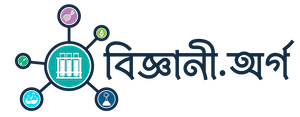
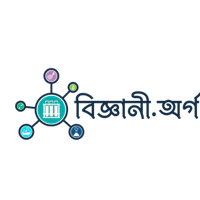
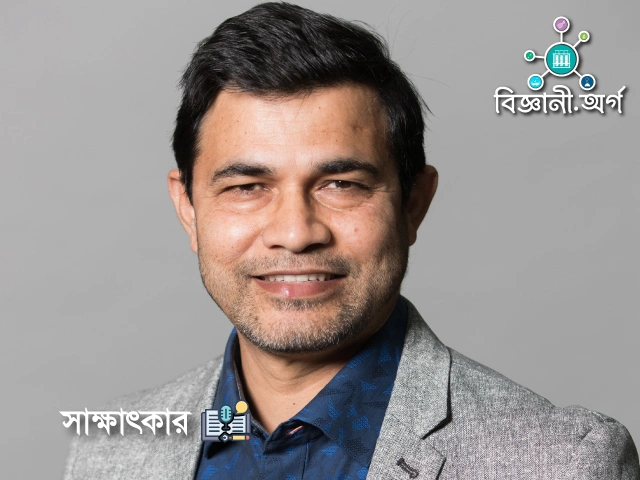


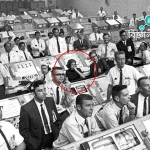

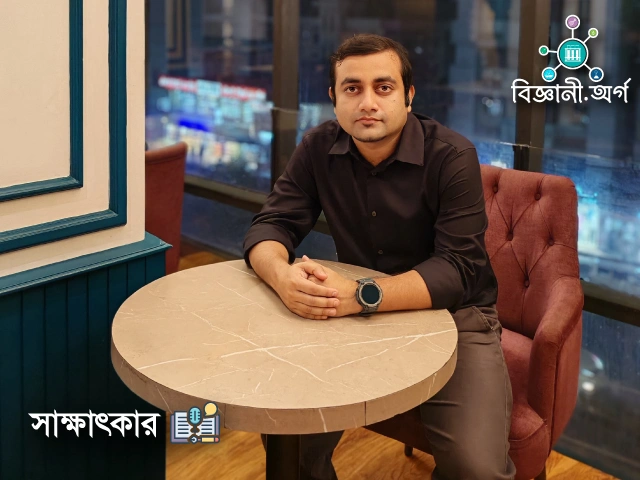

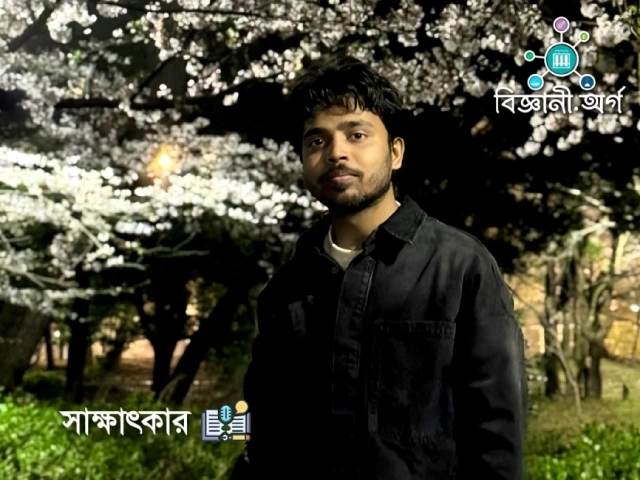
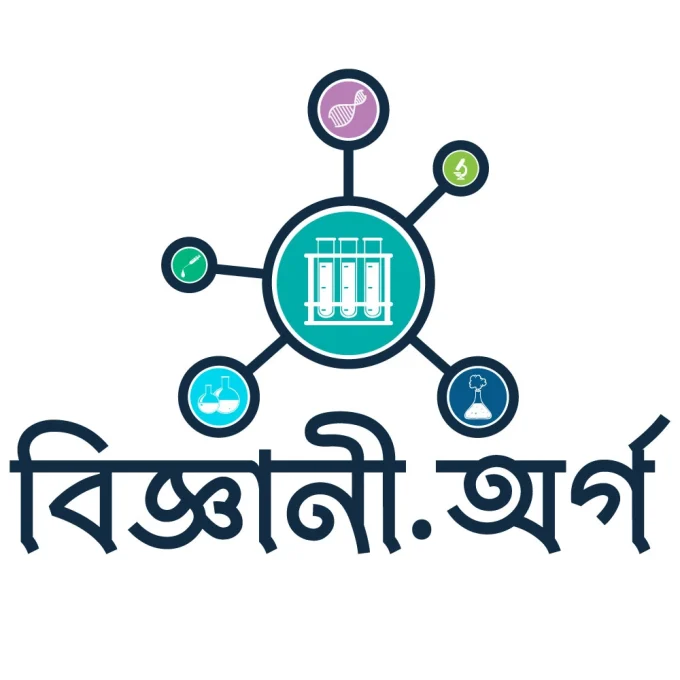
Leave a comment